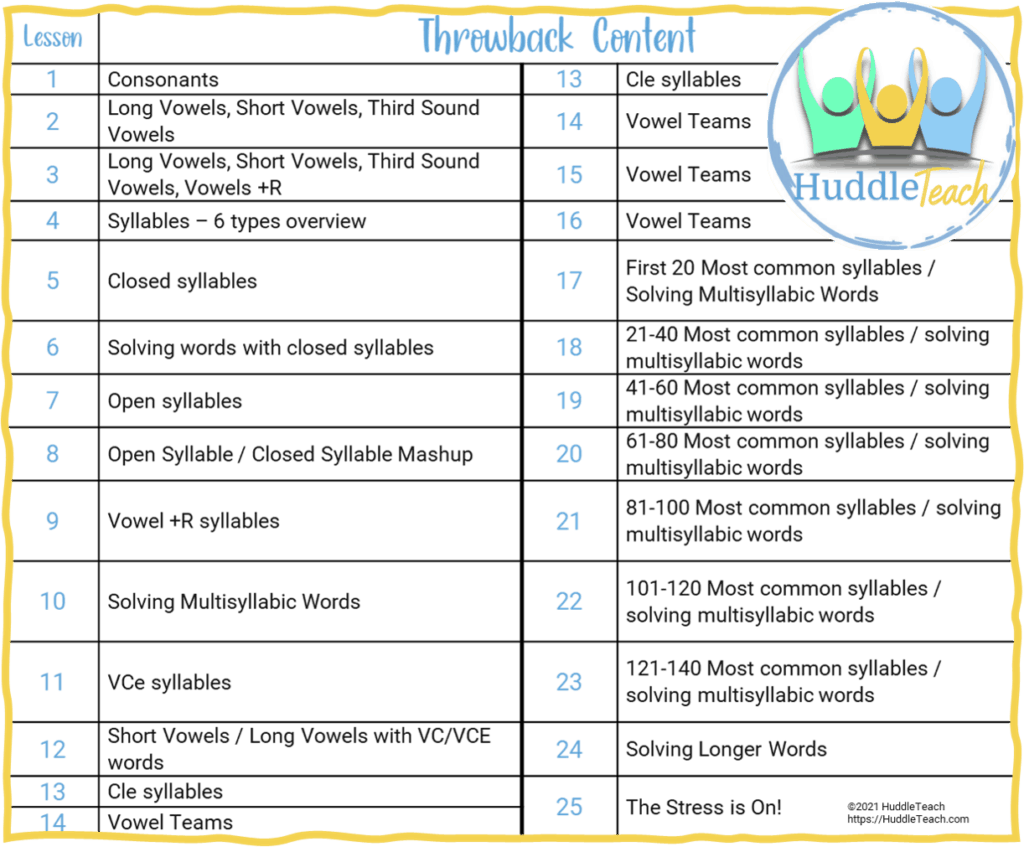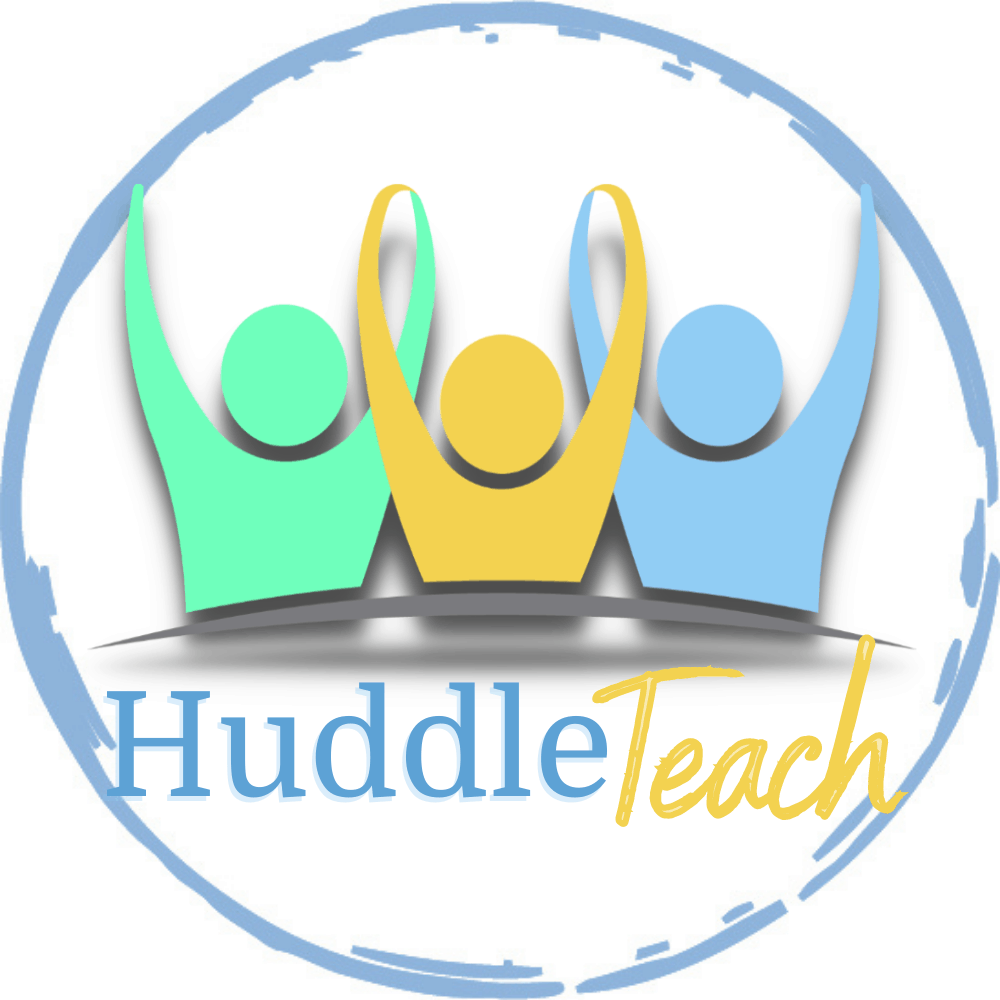How do you know what older struggling readers need?
When I started my work with middle school struggling readers, I assumed I would be working with students who had trouble implementing comprehension strategies. That part was true enough, but I discovered many of these students needed more than that – they needed word solving strategies. How do you know if your adolescent striving readers need intentional and systematic word solving instruction?
| Need Word Solving Strategies | Need Comprehension Strategies |
| Cannot tackle unfamiliar words | Does not remember what they read beyond random details |
| Has a difficult time moving forward with spelling | Need to look back for all answers |
| Has a low reading accuracy score. These students often look at a word and guess. | Does not monitor understanding |
| Has a low fluency score | Does not adjust speed for difficulty of the content |
| Does not monitor accuracy | Cannot critically think about text |
“Researchers estimate that approximately 10% of adolescents struggle with word identification skills….. it is important to realize that this estimate is for the population of all adolescents and that when talking specifically about struggling readers this estimate is likely to be much higher.
AdLit
What reading program do you use for this skill?
My reading program is ME, just like your reading program is probably YOU! By the time students get to middle school, let’s face it – if a computer program could have fixed it by now, it would have! Older struggling readers need intentional, targeted work toward their very human skills, and a computer program cannot explain and provide the hands-on practice that you can.
How do you convince middle school readers to do this kind of work?
It’s hard for older students to swallow the fact that they are working on basic reading skills, but I have found the way this message is packaged has everything to do with their motivation and participation. I found the easiest way to engage them is through the idea of swing back lessons. I explain it to students like this:
Me: Picture yourself at the playground. You go over to swing. You sit down. Which way do you go first?
Many students: Forward!
A few students: Backward!
One student: I just go around in circles! With my belly on swing! It’s awesome!
Me: Okay, but really. Picture it. You want to fly on that swing! Which way do you go first?
Students, after a bit of convincing each other: Backward!
Me: That’s right! You go backward! And the further you go backward, the further and faster you can sail forward! On Throwback Thursday, that’s what we do! We swing back to pick up those skills from long ago so we can all fly faster and higher the rest of the time!

How do you begin with basic decoding skills?
My first swing back lesson is a consonant review. Students remember this quickly, so this I usually the only class period dedicated strictly to consonant learning. Some students struggle with the letter combinations, such as blends and digraphs, but even they usually only need a small amount of reteaching and practice.
The next few swing back lessons focus on vowel sounds, and the series of swing back skills continue from there. This is my tried-and-true sequence for teaching decoding skills to older students:

UPDATE: Do you have a deeper concern about your student’s ability to decode? Check out this post about assessments and/or use an adaptation of the Quick Phonics Screener.
How long should these decoding lessons be?
My goal is to keep my swing back lessons to about 20 minutes. Think MINI-LESSON as much of this will be a review of something long ago. The practice time for each of the skills is much longer and more cyclical, and full of hands-on activities. After the reminder lesson, practice is the next important thing students will do. The continued application of these principles, moving straight into solving longer words, is the pay out to students for having to work through these skills. Students gain confidence for solving multisyllabic words through these lessons and are less hesitant to read with other students.
How long do you keep up these kinds of lessons?
The twenty-five lessons listed here take about six weeks of school to deliver. I begin the second week of school – after building a classroom climate around growth mindset. After all, students must trust me and themselves before beginning this type of work. Practice continues throughout the rest of the year with gradually more difficult words. The topics are only revisited when students encounter difficulty decoding words. Occasionally, a few students will have a more difficult time moving into words beyond four syllables. I meet with these students and follow the Strategy for Solving Multisyllabic Words:
- Underline all the vowels. Remind students that every syllable has a vowel or vowel sound.
- Determine syllable boundaries and draw a line.
- Pronounce the word as marked.
- Make any corrections to the boundaries to redefine vowel sounds.
- Pronounce the word again.
- Erase the markings and read the word.
- Explain the meaning of the word, using parts of the word, if necessary.
This process is slightly faster and more general than elementary versions, where consonants are marked and split.
Where do you find phonics materials for older struggling readers?
It has been a struggle to find materials for older struggling readers as most things are designed for younger students. If I don’t have time to adapt, I’ve had to do without until I had time to make something. I hope the materials I’ve created help you move your students from striving readers to thriving readers!
Please visit the website store or the TPT store to see these materials!

